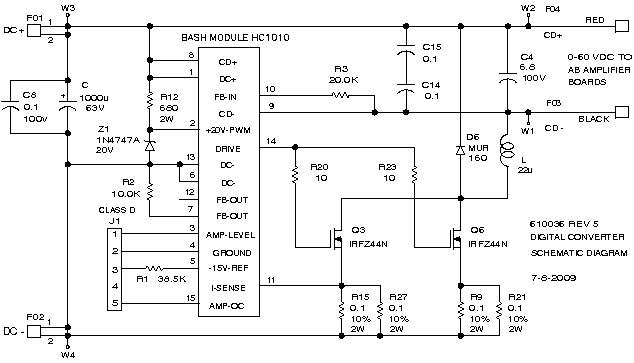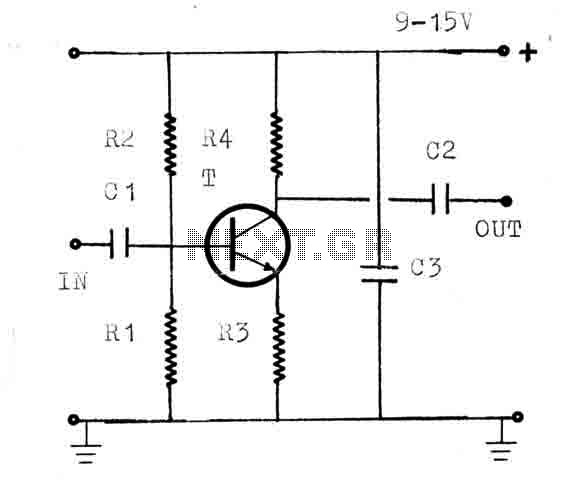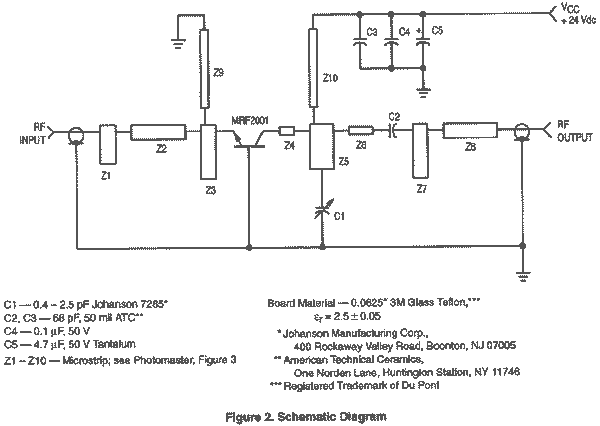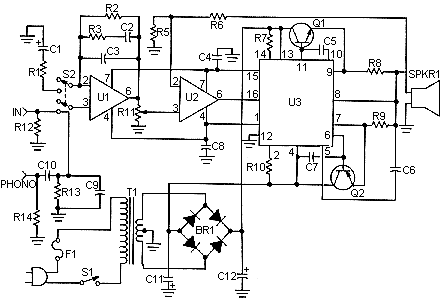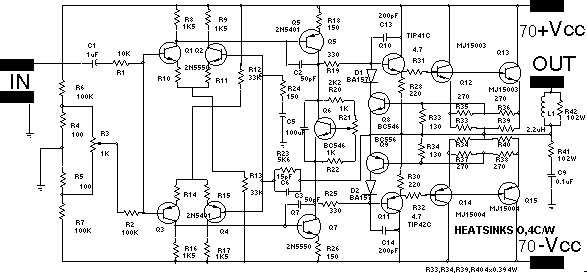
18W Audio Amplifier

Can be directly connected to CD players, tuners and tape recorders.
The circuit described above can be interfaced directly with various audio devices such as CD players, tuners, and tape recorders. This indicates that the circuit is designed to handle audio signals, likely in an analog format, as these devices typically output such signals.
The circuit's ability to connect directly to these devices suggests that it has the necessary input impedance to match the output impedance of the audio devices, ensuring optimal signal transfer and minimizing signal loss or distortion. It also implies that the circuit can operate at the voltage levels output by these devices, which are typically line level voltages.
The circuit may contain components such as resistors, capacitors, and possibly operational amplifiers (op-amps) to process the audio signals. If op-amps are used, they may be configured in various ways, such as voltage followers (for impedance matching), inverting or non-inverting amplifiers (for signal amplification), or active filters (for frequency-specific amplification or attenuation).
Given the range of devices that the circuit can connect to, it likely has multiple input channels, each of which can be selected or mixed as required. These channels may be designed to handle different types of connectors, such as RCA for CD players and tuners, and 3.5mm or 1/4" TRS for tape recorders.
Lastly, the circuit may also include output stages, which could be connected to other audio processing circuits or directly to speakers. These stages would likely include additional op-amps for driving the speakers, and possibly tone control circuits for adjusting the bass, mid, and treble frequencies of the audio signal.Can be directly connected to CD players, tuners and tape recorders. 🔗 External reference
The circuit described above can be interfaced directly with various audio devices such as CD players, tuners, and tape recorders. This indicates that the circuit is designed to handle audio signals, likely in an analog format, as these devices typically output such signals.
The circuit's ability to connect directly to these devices suggests that it has the necessary input impedance to match the output impedance of the audio devices, ensuring optimal signal transfer and minimizing signal loss or distortion. It also implies that the circuit can operate at the voltage levels output by these devices, which are typically line level voltages.
The circuit may contain components such as resistors, capacitors, and possibly operational amplifiers (op-amps) to process the audio signals. If op-amps are used, they may be configured in various ways, such as voltage followers (for impedance matching), inverting or non-inverting amplifiers (for signal amplification), or active filters (for frequency-specific amplification or attenuation).
Given the range of devices that the circuit can connect to, it likely has multiple input channels, each of which can be selected or mixed as required. These channels may be designed to handle different types of connectors, such as RCA for CD players and tuners, and 3.5mm or 1/4" TRS for tape recorders.
Lastly, the circuit may also include output stages, which could be connected to other audio processing circuits or directly to speakers. These stages would likely include additional op-amps for driving the speakers, and possibly tone control circuits for adjusting the bass, mid, and treble frequencies of the audio signal.Can be directly connected to CD players, tuners and tape recorders. 🔗 External reference
